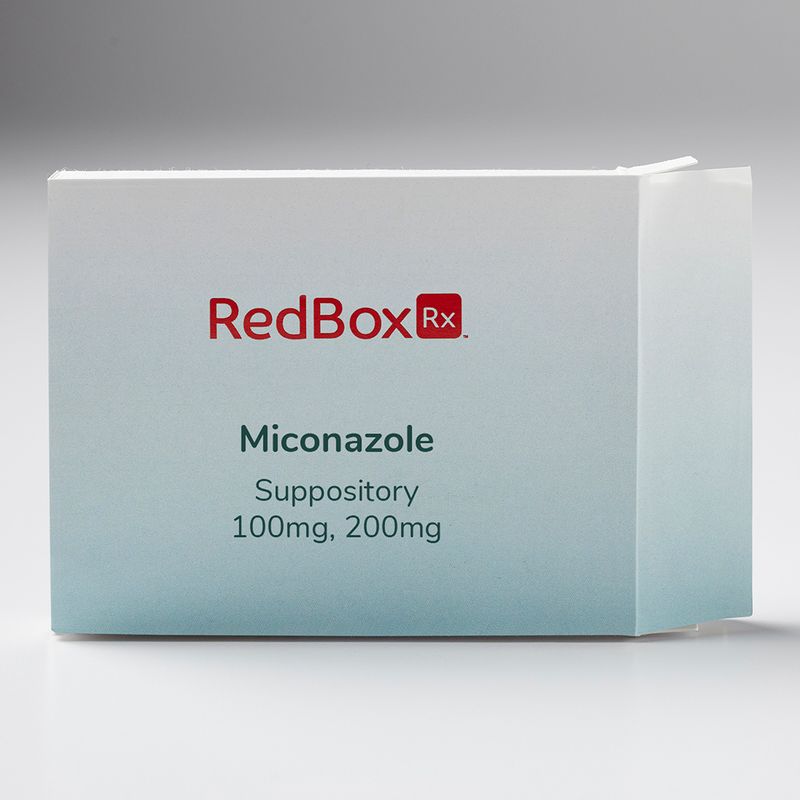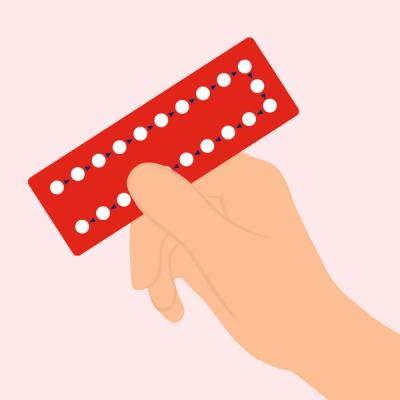Frequently asked questions about Miconazole Vaginal Suppository
-
Vaginal miconazole is used to treat vaginal yeast infections in adults and children 12 years of age and older. Miconazole is in a class of antifungal medications called imidazoles. It works by stopping the growth of fungi that cause infection.
-
Vaginal miconazole comes as a cream or suppository to be inserted into the vagina. The cream may also be applied to the skin around the outside of the vagina. The suppositories are used as a one-time dose (Monistat 1) or once a day at bedtime for 3 days in a row (Monistat 3). The vaginal cream is used once a day at bedtime for 7 days in a row (Monistat 7). The cream is used twice a day for up to 7 days, on the skin around the outside of the vagina. Follow the directions on the package or as directed by your doctor carefully, and ask your doctor or pharmacist to explain any part you do not understand. Use miconazole exactly as directed. Do not use more or less of it or use it more often than directed on the package or prescribed by your doctor.
Vaginal miconazole is available without a prescription (over the counter). If this is the first time you have had vaginal itching and discomfort, talk to a doctor before using miconazole. If a doctor has told you before that you had a yeast infection and you have the same symptoms again, use the vaginal cream or suppositories as directed on the package.
Do not have vaginal intercourse or use other vaginal products (such as tampons, douches, or spermicides) during your treatment.
You should begin to feel better during the first three days of treatment with miconazole. If your symptoms do not improve or get worse, call your doctor.
To apply the external miconazole cream, use your finger to apply a small amount of cream to the affected area of skin on the outside of the vagina.
To use the miconazole vaginal cream or suppositories, read the instructions provided with the medication and follow these steps:
1. Fill the special applicator that comes with the cream to the level indicated, or unwrap a suppository and place it on the applicator as shown in the instructions.
1. Lie on your back with your knees drawn upward and spread apart or standing with your feet far apart and knees bent.
1. Gently insert the applicator into the vagina, and push the plunger to release the medication.
1. Withdraw the applicator.
1. Discard the applicator if it is disposable. If the applicator is reusable, pull it apart and clean it with soap and warm water after each use.
1. Wash your hands promptly to avoid spreading the infection.
The dose should be applied when you lie down to go to bed. It works best if you do not get up after applying it except to wash your hands. You may wish to wear a sanitary napkin while using the suppositories or vaginal cream to protect your clothing against stains. Continue using miconazole vaginal cream or suppositories even if you get your period during treatment.
-
This medication may be prescribed for other uses; ask your doctor or pharmacist for more information.
-
Before using vaginal miconazole,
tell your doctor and pharmacist if you are allergic to miconazole, any other medications, or any of the ingredients in miconazole external cream, vaginal cream, or suppositories. Ask your pharmacist for a list of the ingredients.
tell your doctor and pharmacist what prescription and nonprescription medications, vitamins, nutritional supplements, and herbal products you are taking or plan to take. Be sure to mention the following: warfarin (Coumadin, Jantoven). Your doctor may need to change the doses of your medications or monitor you carefully for side effects.
tell your doctor if you have lower stomach, back or shoulder pain. fever, chills, nausea, vomiting, or foul-smelling vaginal discharge; been exposed to or have human immunodeficiency virus (HIV) or acquired immunodeficiency syndrome (AIDS); or have had frequent vaginal yeast infections (once a month or 3 or more infections in 6 months).
tell your doctor if you are pregnant, plan to become pregnant, or are breastfeeding. If you become pregnant while using miconazole, call your doctor.
you should know that condoms and diaphragms may be weakened if they are used during your treatment with vaginal miconazole. Because of this, these devices may not be effective at preventing pregnancy or sexually transmitted diseases if you use them during your treatment.
-
Unless your doctor tells you otherwise, continue your normal diet.
-
Use the missed dose as soon as you remember it. However, if it is almost time for the next dose, skip the missed dose and continue your regular dosing schedule. Do not use a double dose to make up for a missed one.
-
Miconazole may cause side effects. Tell your doctor if any of these symptoms are severe or do not go away:
increased burning, itching, or irritation of the vagina
Some side effects can be serious. If you experience any of the following symptoms, stop using miconazole and call your doctor immediately:
hives
rash
If you experience a serious side effect, you or your doctor may send a report to the Food and Drug Administration's (FDA) MedWatch Adverse Event Reporting program online (http://www.fda.gov/Safety/MedWatch) or by phone (1-800-332-1088).
-
Keep this medication in the container it came in, tightly closed, and out of reach of children. Store it at room temperature and away from excess heat and moisture (not in the bathroom).
It is important to keep all medication out of sight and reach of children as many containers (such as weekly pill minders and those for eye drops, creams, patches, and inhalers) are not child-resistant and young children can open them easily. To protect young children from poisoning, always lock safety caps and immediately place the medication in a safe location - one that is up and away and out of their sight and reach. http://www.upandaway.org
Unneeded medications should be disposed of in special ways to ensure that pets, children, and other people cannot consume them. However, you should not flush this medication down the toilet. Instead, the best way to dispose of your medication is through a medicine take-back program. Talk to your pharmacist or contact your local garbage/recycling department to learn about take-back programs in your community. See the FDA's Safe Disposal of Medicines website (http://goo.gl/c4Rm4p) for more information if you do not have access to a take-back program.
-
If someone swallows miconazole vaginal, call your local poison control center at 1-800-222-1222. If the victim has collapsed or is not breathing, call local emergency services at 911.
-
Keep all appointments with your doctor.
Ask your pharmacist any questions you have about miconazole.
If you still have symptoms of infection 7 days after starting treatment with miconazole, call your doctor.
It is important for you to keep a written list of all of the prescription and nonprescription (over-the-counter) medicines you are taking, as well as any products such as vitamins, minerals, or other dietary supplements. You should bring this list with you each time you visit a doctor or if you are admitted to a hospital. It is also important information to carry with you in case of emergencies.
-
Monistat® 1 Combination Pack Dual-Pak®
Monistat® 3 Combination Pack®
Monistat® 3 Suppositories
Monistat® 7 Cream
Monistat® 7 Combination Pack®
Monistat® 7 Suppositories
-
We offer a variety of prescription medication options for yeast infections including:
Clotrimazole Topical Cream
Ketoconazole 2% Cream (Generic Nizoral®)

How we help you
It is time to start thinking outside the healthcare box. Our medical and pharmacy teams provide the individualized care you need when you need it. All completely online. It is quality, trusted treatment with affordable convenience including:
- FDA approved prescription treatments
- Easy online visits on your own time
- U.S. licensed medical providers
- FREE delivery in discreet packaging
Sorry, we’re closed for today. Our U.S. licensed medical providers are available daily 7 a.m. to 9 p.m. CST via live video visit. We look forward to serving you soon. Email us anytime at [email protected].




